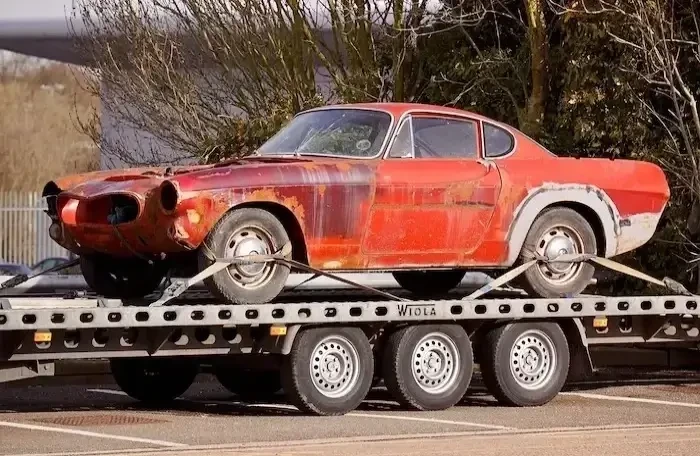You've probably never given much attention to the many trailer and truck alternatives available for moving automobiles even if you're planning to ship. Auto transportation is one of those services that is mostly unnoticed until it is required. W e're here to assist you and will select the best vehicle shipping trailer for your needs and would like to clarify a few differences in trailer style.
We find the different vehicle shipping options fascinating, so we thought it would be fun to put together a post that explains the differences between the types of trucks and trailers transporters use in the shipping industry.
Open and Enclosed Carriers
If you've already spoken with an auto transport management firm like AmeriFreight, you're already aware that when shipping a car, you'll normally be able to choose between an open or enclosed carrier. The type of transporter that will haul your vehicle is described in these selections. Enclosed transport is like a shipping container and keeps the automobiles and trucks inside, entirely guarded from the weather, whereas auto transport is what most of us think of when we think of "car carrier"—an open trailer. Big rigs are frequently used to tow both.
Let's get more specific
Open
Any trailer without sides is referred to as an open vehicle carrier trailer. Open car carriers come in a variety of shapes and sizes, but they all have one thing in common: the automobiles they transport are exposed to the elements. What's even better is that shipping an automobile with an open car carrier trailer is not only safe, but also efficient and widespread in the auto transport industry.
Open automobile transport is the normal shipping technique; in fact, most cars and trucks are transported on open carriers that can accommodate one to 10 vehicles. Truckers who transport automobiles on open carriers are well-trained and know how to properly pack and secure autos to ensure their safety while on the road.
Enclosed
Fewer automobiles are transported in closed car carriers, which are trailers with sides and a top that entirely seal the vehicles within from the weather and the road. Vehicle owners who select this way of shipping almost always do so because their autos are extremely valuable. Enclosed carriers that can contain one to five automobiles are used to transport classic cars, antique cars, rare cars, luxury cars, custom cars, and race cars. The most significant advantage of shipping a vehicle on an enclosed carrier is that it will be completely covered and protected throughout its transit.
Benifits of Each
Let's start with the advantages of open transportation:
It is the most cost-effective technique of shipping a vehicle.
Because there are more of this sort of carrier on the road, it may be faster.
Open carrier shipping is better for the environment since it uses less fuel.
Benefits of shipping a vehicle in an enclosed trailer:
Specialty cars will be shielded from all road debris and inclement weather.
The automobiles and trucks come in showroom condition.
It's private, so you won't have to worry about strangers touching your car.
So what are the differences in Style?
An enclosed trailer with a single floor and a single vehicle.
Typically, this form of specialist auto transport is employed to carry particularly costly vehicles and trucks across short distances. Both gooseneck and bumper pull trailers may be drawn by a dually vehicle, and both are regularly utilized.
A multi-vehicle enclosed trailer with a single level
Enclosed carriers, which are carried by a semi, may transport more than one vehicle — generally three — in an enclosed trailer. The trailer's vehicles travel in single line, high off the roadbed.
An enclosed trailer with two levels and multiple vehicles.
Because it can handle two stacked rows of cars, this enclosed carrier is tall and sits closer to the roadbed (usually six to eight in total). These trailers are towed by large semi-trucks and loaded and unloaded using movable deck ramps, exactly like an open carrier.
It's also worth mentioning that enclosed carriers are available in two types: soft-sided trailers and hard-sided trailers. Instead of hard walls, soft-sided trailers include flexible PVC-coated vinyl side curtains, which can make loading and unloading cars easier since there is more area for strapping and unstrapping while the side curtains are up. Hard-sided trailers, though, are more commonplace.
Hotshots (Open)
A dually truck (a pickup with dual rear wheels on each side) pulls a gooseneck trailer only big enough to tow one automobile or truck in this sort of open carrier layout. A single vehicle hotshot trailer is typically only used to move a vehicle over short distances, however it may be utilized for long-distance deliveries when accelerated shipping is necessary.
Tow trucks and single car hotshot trailers are not the same thing. Although flatbed tow trucks are single vehicle carriers and are used to transport automobiles over short distances, they do not tow trailers. A hydraulic bed is usually fitted to flatbed tow vehicles.
Open multi-car trailers with a single level
Single-level multi-vehicle trailers capable of towing two to six automobiles, trucks, or compact RVs are available for hauling more than one vehicle. A dually truck may tow multi-car gooseneck or bumper pull trailers, as well as bigger single deck trailers that require a semi in front. This vehicle carrier is larger than a hotshot, yet it may be tiny enough to fit into locations where larger car carriers can't, such as tight city streets.
Open multi-car trailers with two levels
The bulk of car carriers you'll see on the road are multi-level, multi-vehicle trailers, which are the industry's standard mode of open transport. Your vehicle will most likely be delivered on this sort of trailer, which will be towed by a semi-truck, if you book open auto shipping.
Wrapping it up
Given the numerous options for shipping a car, let's discuss how to select the best auto carrier for your vehicle. Your primary issue should be the level of security required by your vehicle. On an open trailer, a family sedan or your SUV will suffice. There's no compelling need to spend more money for enclosed shipping. Paying a premium for covered vehicle shipping may make sense if your automobile is an antique, one-of-a-kind, or extremely valuable (financially or otherwise).
Obtain quotations from three to five vehicle transport management providers, regardless of the shipping method you pick. That way, you'll have a better idea of how much it costs to move a car from your area to your destination and which business will perform the greatest job. Are you still undecided on which transporter to use? Before you book, review our list of questions to ask vehicle transport firms. One of the simplest methods to determine how a company handles its customers—and how they will treat your car—is to speak with a salesperson.














